Starting a general contractor business can be an exciting and rewarding venture. As a general contractor, you have the opportunity to work on a variety of projects and be your own boss. However, starting a business requires careful planning and preparation. In this article, we will guide you through the essential steps to start a Read more
Whats New

Starting a general contractor business can be an exciting and rewarding venture. As a general contractor, you have the opportunity to work on a variety of projects and be your own boss. However, starting a business requires careful planning and preparation. In this article, we will guide you through the essential steps to start a successful general contractor business in 2024.

Research and Planning
Before venturing into the realm of general contracting, you’ll want to engage in extensive research and develop a comprehensive business plan. This meticulously crafted plan should encompass a detailed elucidation of your objectives, intended customer base, in-depth analysis of competitors, and well-grounded financial projections. It will serve as a guiding compass for your business endeavors, empowering you to make astute and well-informed choices as you traverse this exciting entrepreneurial journey.
Legal Requirements and Licensing
To successfully and legally operate a general contractor business, you’ll need to fulfill a number of essential legal requirements and acquire the appropriate licenses and permits. Conduct thorough research on the specific regulations and guidelines applicable to your particular area of operation, and ensure that you meticulously adhere to all the necessary paperwork and procedures. This may include:
- registering your business with the relevant authorities
- procuring comprehensive liability insurance to safeguard your interests
- obtaining any mandatory bonds that may be required
By diligently following these steps, you can establish a solid foundation for your general contractor business and ensure that you are operating within the legal framework while also mitigating potential risks and liabilities.
Insurance Coverage
Insurance is a vital aspect of running a general contractor business. It provides protection against various risks and liabilities that may arise during construction projects. Here are some essential insurance coverages to consider:
- General liability insurance protects your business from third-party claims for bodily injury, property damage, or personal injury. It provides coverage for legal fees, medical expenses, and potential settlements or judgments.
- Workers’ compensation insurance – If you have employees, workers’ compensation insurance is typically required by law. This coverage provides benefits to employees who suffer work-related injuries or illnesses. It helps cover medical expenses, lost wages, and rehabilitation costs.
- Builder’s risk insurance offers protection for property and materials during construction projects. It covers damage caused by theft, vandalism, fire, storms, and other specified perils. Having this coverage ensures that you are financially protected if unexpected events occur.
- Professional liability insurance coverage, also known as errors and omissions insurance, is essential for contractors who provide design or consulting services. Essentially, by having professional liability insurance coverage, these types of businesses can protect themselves from claims of negligence, errors, or omissions that may lead to financial losses for clients.
Financing Your Business
Starting a general contractor business is an exciting venture that involves several important steps. One of the key aspects to consider is the initial investment required for equipment, supplies, marketing, and other startup costs. You need to carefully evaluate your financing options to ensure that you have the necessary funds to get your business off the ground.
One option is to use your personal savings to cover the initial investment. This allows you to maintain control over your business and avoid taking on additional debt. However, it’s important to assess whether your savings are sufficient to cover all the expenses associated with starting a general contractor business.
Another financing option to explore is obtaining a business loan. This can provide you with the necessary funds to purchase equipment, hire employees, and cover other essential expenses. However, it’s important to research different lenders and compare interest rates and repayment terms to find the best loan option for your specific needs.
Building a Network
Networking plays an indispensable role in the success and growth of any business, including general contractor businesses. It is of utmost importance to actively and proactively connect, engage, and collaborate with other highly skilled and experienced industry professionals, reputable subcontractors, reliable suppliers, and potential clients. All these groups can greatly contribute to the remarkable achievements and profitability of your business.
By actively participating in various industry events, conferences, seminars, and workshops, you can not only enhance your knowledge and expertise but also create invaluable connections and establish long-lasting, mutually beneficial relationships with key stakeholders and decision-makers in the industry.
Additionally, joining and actively participating in reputable trade associations and organizations can provide you with a wide range of exclusive benefits, including access to valuable resources, industry insights, and networking opportunities with like-minded professionals.

Marketing and Branding
To effectively promote your general contractor business, you need to develop a comprehensive marketing strategy that encompasses various elements. Here are some additional ideas to consider:
- Establish a strong online presence.
In addition to creating a professional website, consider setting up profiles on social media platforms such as Facebook, Instagram, and LinkedIn. This will allow you to engage with potential customers, showcase your previous projects, and share valuable content related to your expertise.
- Utilize search engine optimization (SEO).
Optimize your website and online content with relevant keywords to improve your visibility on search engine results pages. This will increase the chances of potential customers finding your business when searching for contractor services.
- Invest in online advertising.
Consider running targeted online ads on platforms like Google Ads or social media platforms. This will help you reach a wider audience and generate leads for your business.
- Build strong relationships with satisfied clients.
In addition to providing testimonials on your website, actively seek feedback from satisfied clients and encourage them to leave reviews on platforms like Google My Business, Yelp, or Angie’s List. Positive reviews and recommendations can greatly influence potential customers’ decision-making process.
- Offer valuable content.
Create blog posts, videos, or case studies that demonstrate your expertise and provide valuable information to your target audience. This will not only help establish you as an authority in your industry but also attract potential customers who are seeking relevant information.
Remember, a comprehensive marketing strategy goes beyond just having a website. By implementing these additional ideas, you can effectively promote your general contractor business and stand out from your competitors.
Final Thoughts
Starting a general contractor business in 2024 requires careful planning, knowledge of legal requirements, and a strong focus on insurance coverage. By conducting thorough research, obtaining the necessary licenses, and protecting your business with the right insurance policies, you can lay a solid foundation for success. Remember to build a strong network, implement effective marketing strategies, and never stop learning and improving your skills. With dedication and determination, you can build a thriving general contractor business in 2024.
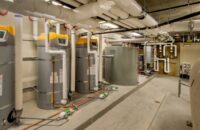
In today’s ever-evolving commercial real estate market, staying relevant and attractive to businesses and consumers is imperative. This necessity is not just a trend but a critical component of sustaining business success. Our journey into commercial property revitalization explores the transformative strategies essential for thriving in the modern market. This guide aims to navigate the Read more
In today’s ever-evolving commercial real estate market, staying relevant and attractive to businesses and consumers is imperative. This necessity is not just a trend but a critical component of sustaining business success. Our journey into commercial property revitalization explores the transformative strategies essential for thriving in the modern market.
This guide aims to navigate the myriad of innovative upgrades that can breathe new life into commercial spaces. We’ll uncover how these upgrades enhance the aesthetic appeal and boost functionality, efficiency, and sustainability, aligning with contemporary business needs and customer expectations.
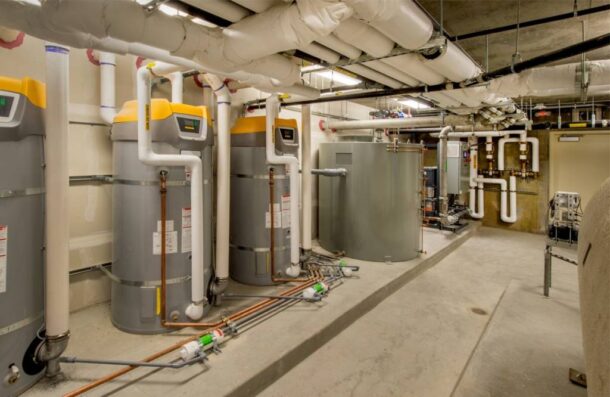
The Evolution of Consumer and Business Needs
The era when commercial properties could remain static for decades is now a relic of the past. In today’s digital age, coupled with the ever-evolving preferences of consumers, there’s a pressing demand for continuous adaptation and reinvention. This dynamic landscape requires property owners to stay agile and responsive to shifting trends and technological advancements. Properties that must adapt to these changes risk becoming irrelevant, reducing foot traffic and business opportunities.
Planning for Revitalization: A Step-by-Step Guide
The first step towards revitalization is a thorough assessment of your commercial property. Identifying areas that need improvement sets the stage for a successful upgrade project. This phase balances ambition and practicality, ensuring the goals align with the available budget and stakeholder expectations.
Once the assessment is complete, it’s time to plan. This involves setting realistic goals, budgeting effectively, and engaging with key stakeholders – business owners, property managers, and tenants. Aligning everyone’s vision is crucial for a smooth revitalization process, ensuring that the upgrades meet the needs of all parties involved.
Paving and Exterior Upgrades
First impressions are crucial, and the exterior of a commercial property plays a significant role in shaping these perceptions. Quality paving, crafted by skilled commercial paving companies, and well-designed outdoor spaces are pivotal in enhancing a property’s curb appeal. The expertise of these companies in selecting suitable materials and designs for paving must be considered, as their choices greatly influence the property’s overall aesthetic, functionality, and durability.
Beyond the expertise brought in by commercial paving companies, other exterior elements like landscaping and signage also contribute significantly to a property’s allure. This section will delve into harmonizing these elements to create an inviting and professional exterior. Such an exterior attracts attention and reflects the quality and ethos of the businesses it houses, making it an integral part of the property’s identity and appeal.

Technology Integration
Incorporating technology into commercial spaces is no longer a luxury but a necessity. Technology can significantly enhance operational efficiency and customer engagement, from automated lighting systems to sophisticated security solutions. This section will explore specific technological advancements reshaping commercial properties’ operations, offering both owners and tenants tangible benefits.
But technology isn’t just about gadgets and systems; it’s about creating an environment that resonates with the modern consumer and workforce. For example, smart buildings save energy and provide everyone with a more comfortable and interactive experience. We’ll dive into how these technologies can seamlessly integrate into existing spaces, catapulting them into the digital age.
Aesthetic and Functional Improvements
The visual appeal of a property plays a crucial role in attracting and retaining customers. This section discusses the transformative power of aesthetic upgrades, from modern lighting fixtures to contemporary design elements. These changes, while often simple, can significantly impact the overall appeal of a commercial space.
Functionality is equally important. Upgrades should not only look good but also enhance the practical use of the space. We’ll explore how layout alterations, signage improvements, and other functional enhancements can make a property more user-friendly and appealing to many businesses.
Sustainability Initiatives
Sustainability is a crucial consideration in modern property upgrades. Eco-friendly enhancements contribute to environmental conservation and offer long-term financial benefits. This section will discuss various sustainable upgrade options like energy-efficient systems and green building materials, highlighting their importance in today’s market.
In addition to environmental benefits, sustainable upgrades can lead to cost savings and improved public perception. We’ll explore how incorporating green practices into property revitalization can enhance a business’s brand and appeal to a growing demographic of environmentally conscious consumers and clients.
Overcoming Revitalization Challenges
While the benefits of property revitalization are clear, the process is often fraught with challenges. One of the most common hurdles is funding. Securing the necessary capital for a large-scale upgrade can be daunting. Property owners often face regulatory compliance issues, ensuring all renovations meet current codes and standards. This section provides strategies for overcoming these financial and regulatory obstacles, offering practical advice on navigating these complexities.
Another significant challenge is minimizing disruption to existing tenants and businesses during the upgrade process. It’s crucial to manage renovations in a way that allows companies to operate as usual. We’ll discuss how to plan and communicate with tenants effectively, ensuring a smooth transition through the renovation period.
tenants and visitors, adding a new dimension to the traditional concept of commercial property.
Implementing Upgrades: A Practical Roadmap
Having a well-thought-out plan is crucial for the successful implementation of property upgrades. This part of the article provides a step-by-step guide on bringing your revitalization project to fruition. From selecting the right contractors to managing the project timeline and budget, we cover all the critical aspects of the implementation process.
Quality control is also essential. Ensuring the upgrades meet the desired standards is critical for achieving the intended impact. We’ll discuss maintaining quality throughout the project, including regular monitoring and engaging with experienced professionals who can bring your vision to life.
Conclusion
Revitalizing your commercial property is an investment in the future. This concluding section reiterates the manifold benefits of property upgrades, from enhancing aesthetic appeal to increasing operational efficiency and sustainability. We encourage property owners to view revitalization as an opportunity to preserve and increase the value of their assets.
Ultimately, the goal of commercial property upgrades is to create spaces that are both functional and appealing, meeting the needs of modern businesses and consumers. This investment, though substantial, can lead to significant returns, both financially and in terms of tenant satisfaction and loyalty.
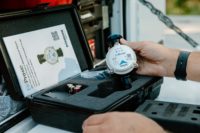
Running a small business comes with many concerns and worries. Outside of the usual issues, your troubles multiply when you need to purchase equipment. Your business can only operate with the equipment, so it must be functional at all times. Whether you’re a plumber, a gas engineer or you make bespoke items by hand; you Read more
Running a small business comes with many concerns and worries. Outside of the usual issues, your troubles multiply when you need to purchase equipment. Your business can only operate with the equipment, so it must be functional at all times. Whether you’re a plumber, a gas engineer or you make bespoke items by hand; you need to have the right equipment with you at all times.
It’s easy to make mistakes when procuring business equipment – especially if this is your first time doing so. This blog post will include some of the crucial things to consider before buying anything. We’ll offer tips along the way, as well as mention a few mistakes you must avoid.

Buy equipment that’s fit for commercial use
Speaking of mistakes, buying personal equipment is one of the biggest you could make. Imagine your business makes clothes or deals with fabric and you need a sewing machine. A quick Google will show you loads of machines for personal use – and they’ll be very affordable.
Your business brain kicks in and sees great savings, so you go ahead and purchase the machine. Unfortunately, it breaks after a few days or weeks of regular use. Why? Because it’s not designed for commercial purposes! You need a heavy-duty sewing machine that’s specifically made for business use. It’s crafted to withstand multiple uses a day and can handle high volumes of fabrics.
The same applies to other equipment for other businesses – if there are commercial options available, you should opt for them over personal ones. It helps to avoid situations where you’re wasting money on equipment that keeps breaking.
Find options from trusted brands
Similarly, equipment can break when you don’t buy from good brands. This sounds like a snooty thing to say, but buying from big brands is important when you run a business. You need your equipment to stand the test of time and last the daily rigors of your job.
For example, if you operate a plumbing business, you need to get your hands on power tools and other plumbing equipment from some of the biggest brands in the industry. This includes the likes of DeWalt or Milwaukee, both of which have excellent reputations and are known for making tools/equipment that last almost forever. But the exact same thing goes for something like a salon for example where you’re expected to own the best shower head water filter for your clients. The quality of your work is shown through your equipment so you need to pick your equipment wisely.
If you buy from an unknown brand, how can you guarantee the quality? You’re acting as a test subject and you can’t afford to waste money as a small business. Plus, using branded equipment makes your business look better. If you rock up to a customer’s house and they see well-known names on all of your tools, it makes them feel better about their decision. They’re confident that you know what you’re doing because your equipment looks fantastic.
Make sure there’s a warranty
When buying large equipment that costs a lot of money, you must get a warranty on it. A warranty is a layer of protection that kicks in when there’s an issue with the product. Let’s say you have a contracting business and you go around building houses or performing home renovations. Part of your job means you need big cement mixers or other large tools – possibly even some mobile generators.
What happens if these tools break during the job? It throws the whole schedule out as you need to find a replacement. You can act fast, but that doesn’t detract from the fact that you’re spending loads of money you didn’t intend to spend. It eats into your cash flow and can cause serious financial implications.
If the equipment is under warranty, this is no longer a problem. The warranty can cover damages and faults, meaning the manufacturer or supplier has to pay for repairs or replacements. You’re financially covered in emergency scenarios, so your cash flow won’t be hit as badly. So, be 100% certain your equipment has a warranty and consider purchasing an extended warranty to gain protection for longer.
Assess any compatibility issues
This tip is critical when you have certain systems in place throughout your small business. You must ensure your new equipment is compatible with these systems. Can it easily integrate with everything else you’ve got going on?
One example of this is payment equipment. You run a small business that takes payments in person. It could be a retail store, coffee shop, or even a door-to-door service business. Regardless, you need payment equipment to process in-person payments. This will typically mean you have some sort of card reader for people to tap, swipe, or insert their card.
In this specific scenario, you must ensure the card reader is compatible with other business systems. For instance, can you automatically integrate all payments from the reader into your accounting software? This would mean any payment immediately gets uploaded to your books, so it’s easier for you to track everything. If it’s not compatible, you’re adding another step to the bookkeeping process by needing to take information from the reader and transfer it to your accounting software.
As you can imagine, this gets frustrating very quickly. There are other examples of incompatibility as well, which is why you need to assess if your equipment will fit your business needs.
Check reviews and testimonials
Before buying anything for your business, you must check the reviews and testimonials. Are other people happy with the equipment you’re looking to purchase?
Consider what the reviews say about usability and durability. Is the equipment easy for them to use and does it last for a long time? If all the testimonials praise these features, you know you’re buying something excellent. Being confident that you’re getting something with great usability and durability makes it worth spending more money on the equipment. Sometimes, the cheapest options don’t represent the best value for money – it’s smarter to buy things that last so they are replaced less often.
When there are no reviews for equipment, it’s a big red flag. Also, going back to our first point about commercial use, you must check the reviews are from fellow professionals. If you’re buying wire strippers for your electrician business, you need to know what fellow electricians think about the products, not whether John found the wire strippers good for his one DIY task.
See if leasing is a better option
Buying business equipment isn’t always the best option for every company in every situation. Leasing could be a better choice depending on the circumstances. The key thing to ponder is whether you’ll need the equipment all the time.
Are you going to use it every day? Looking back at our first example again, a business that makes clothes will need a sewing machine every day. A plumber will also need their toolkit – but will contractors always need diggers and big excavation machines?
No! You may only need this equipment for specific jobs, which is when it makes sense to lease rather than buy. Leasing saves money in this situation as you’re only paying to rent the equipment for your job. If you buy something you’ll use sporadically, it spends half the time collecting dust and burning a hole in your budget! Don’t waste money on equipment you won’t need all the time – only buy stuff that will get used enough to be worth owning.
In total, we’ve given you six things to consider when buying equipment for your small business. Make sure it’s suitable for commercial use, buy items from trusted brands, check for warranties to be protected, make sure the equipment is compatible with your business processes, read through all reviews, and see if leasing is a better option.
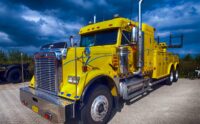
When your car decides to throw a tantrum and gives up in the middle of nowhere, who are you gonna call? No, not Ghostbusters, but almost as important – a tow truck service! Picking the right one like tow truck service in Durham NC isn’t just about dialing the first number you find under ‘Tow Read more
When your car decides to throw a tantrum and gives up in the middle of nowhere, who are you gonna call? No, not Ghostbusters, but almost as important – a tow truck service! Picking the right one like tow truck service in Durham NC isn’t just about dialing the first number you find under ‘Tow Truck’ in your panic mode. It’s a bit more nuanced than that.
Let’s dive into the nitty-gritty of selecting a tow truck service that won’t leave you or your wallet stranded.

Understanding Different Types of Tow Trucks
Ever seen a flatbed tow truck and thought, “That’s a bit much for my little hatchback”? Well, you’re not wrong. Tow trucks come in various shapes and sizes, each suited for different vehicular predicaments. Let’s break them down:
Flatbed Tow Trucks
- What are they? These trucks have a large flat platform. Your car is either driven or winched onto the bed.
- Best for: Almost anything under the sun – cars, bikes, vans, even your mate’s weird sculpture that needs shifting.
- Why choose them? They’re like the Swiss Army knife of tow trucks – versatile and safe. Your car takes a ride without any wear and tear since its wheels don’t touch the road.
Hook and Chain Tow Trucks
- What are they? They sound medieval, and they sort of are. These tow trucks use a hook and chain to drag your car along.
- Best for: Best avoided, honestly. They’re old school and can damage your car. But if you’re moving a wreck to the scrapyard, this is your guy.
Wheel-Lift Tow Trucks
- What are they? A less damaging cousin of the hook and chain. They lift your car by the wheels.
- Best for: Short distances and tight budgets. It’s not as safe as flatbeds, but it’s better than having your car impersonate a skateboard.
Now that you’re a mini-expert on tow trucks, let’s talk about how fast these knights in shining armor can get to you.
Evaluating Service Availability and Response Time
You’re stranded; it’s raining, and EastEnders is about to start. You need a tow truck service faster than a cuppa cools down. Here’s how to check for the best in the biz:
24/7 Availability – Because Cars Don’t Respect Your Schedule
- The reality: Cars break down at the most inopportune moments. Ensure your chosen service operates round the clock.
- Pro tip: Save the number of a 24/7 service on your phone. Better to have it and not need it than to need it and not have it.
Response Time – Every Minute Counts
- Why it matters: You don’t want to spend ages waiting, especially in bad weather or unsafe areas.
- What to do: Ask about average response times. Check online reviews to see if they’re more reliable than a weather forecast.
Geographical Coverage – No, They Can’t Tow You from Spain
- The lowdown: Make sure the service covers your most traveled routes. No point in a tow service that doesn’t stretch to your neck of the woods.
- Insider tip: If you’re a frequent traveler, look for a service with a wide coverage area or multiple branches.
Checking Credentials and Experience
Alright, let’s talk about credentials – because you wouldn’t trust just anyone with your beloved motor, would you? Choosing a tow truck service is a bit like picking a babysitter for your car. You want experience, trustworthiness, and someone who won’t raid your fridge (or, in this case, your wallet).
Licensing and Insurance – The Boring but Essential Stuff
- Why it’s a big deal: It’s simple – no proper license, no deal. Insurance is equally crucial. It’s the safety net for your car in case things go south.
- How to check: Ask directly and verify. Any reputable service will happily flaunt their credentials. If they’re shifty about it, run a mile.
Experience and Training – Old Hands Are Gold Hands
- Experience counts: A service that’s been around the block a few times knows how to handle the trickiest of situations.
- Training matters: Make sure their staff are more trained than just being good at driving a big truck. Handling a broken-down vehicle requires skill and care.
Understanding Pricing and Payment Options
Let’s talk turkey – or rather, money. You don’t want to end up paying an arm and a leg just to get your car towed. Understanding the pricing structure is crucial, and so is knowing what payment options are available.
Pricing Structure – No One Likes Nasty Surprises
- Flat rate vs. per mile: Some services charge a flat rate, while others charge per mile. Figure out which works best for your usual routes.
- Additional fees: Ask about any hidden extras. You don’t want a bill that’s more shocking than your car breaking down.
Transparency and Payment Options – Keep It Clear and Simple
- Why transparency is key: A good service will explain their fees upfront. No one likes hidden costs popping up like unwanted weeds.
- Variety in payment: In a world where people are more likely to have a smartphone than cash, check if they accept card payments or digital wallets. It’s the 21st century, after all!
So there you have it – a guide to picking a tow truck service that won’t leave you in the lurch. Remember, it’s not just about finding a service that can drag your car from A to B. It’s about finding a reliable, trustworthy service that won’t make a stressful situation worse.
Let’s do a quick recap, shall we? Know your tow trucks – flatbed, hook and chain, or wheel-lift. Make sure the service is available 24/7 and won’t take ages to reach you. Check their credentials – no license and insurance, no deal. And don’t forget about the dosh – understand the pricing and make sure you’re not caught off-guard.
Choosing the right tow truck service is like choosing a good cuppa. You want it to be strong, reliable, and exactly to your taste. Take a bit of time now to find the right service, and you’ll thank yourself later. Hopefully, you won’t need to call them anytime soon, but if you do, you’ll be ready.
So, keep this guide in your back pocket (or bookmarked on your phone), and share it with your mates. You never know who might need a bit of savvy advice on choosing a tow truck service. Safe travels!
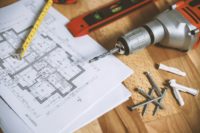
Embarking on the journey of renovating your home can be both exciting and overwhelming. It involves making decisions ranging from preferences to practical considerations. A successful renovation not only revitalizes your living space but also adds value and functionality to your home. The key to achieving an executed renovation lies in planning and organization. In Read more
Embarking on the journey of renovating your home can be both exciting and overwhelming. It involves making decisions ranging from preferences to practical considerations.
A successful renovation not only revitalizes your living space but also adds value and functionality to your home. The key to achieving an executed renovation lies in planning and organization.
In this guide, we will provide tips to help ensure that your home renovation goes smoothly.

Planning Your Home Renovation
Thorough planning serves as the foundation for any home renovation project. Begin by establishing goals for what you want to achieve. Are you seeking space, a style update, or improved energy efficiency?
After defining your objectives, it is important to create a budget that accounts for expenses – which are common during renovations. Establishing a timeline is equally crucial in order to stay on track with the project’s progress. This phase also presents an opportunity to research and select contractors who possess expertise in areas where you may have familiarity.
Design and Aesthetics
The design phase marks the point where your vision starts taking shape. Choosing a design theme ensures a look throughout your home. While it is beneficial to consider trends, it is equally important to incorporate timeless elements that will endure over time.
Choosing the color schemes, materials, and furnishings is essential for creating an overall aesthetic. It’s important to pay attention to lighting as it can greatly influence the mood and perception of a space. By utilizing lighting you can transform your rooms and make them appear more open and inviting.
Navigating Building Permits and Regulations
One aspect of home renovations that often gets overlooked but is following building codes and regulations. Depending on the scope of your project, you may need permits so it’s advisable and legal to start any house construction. Make sure any contractors you hire are aware of these regulations and comply with them. Skipping this step could result in a bigger problem and hassle later on.
Efficient Waste Management Strategies
Efficient waste management is another consideration during renovations. Producing waste is inevitable; but how you manage it can greatly impact the efficiency and cleanliness of your project.
For such projects, a dumpster rental can be a solution to keep your site tidy and streamline waste removal. It also provides an opportunity to be environmentally responsible by separating materials and considering donations to charities or reuse centers. Effective waste management not only keeps your project organized but also reduces its environmental impact.
Managing Your Budget
One of the challenges during home renovation is staying within your budget. To avoid overspending, start by obtaining estimates from contractors and suppliers. This will help you establish a budget. It’s important to be strategic about where you allocate your funds. For example, investing more in high traffic areas like kitchens and bathrooms can be worthwhile.
However, there are areas where you can save money without compromising quality, such as opting for range appliances instead of high end models. Keep a record of all expenses as the project progresses and regularly compare them to your budget. Taking this approach will help you manage costs effectively and make adjustments along the way.
Ensuring Safety During Renovations
Safety should always be a priority when undertaking DIY projects. Make sure to wear safety gear and use tools correctly. If you’re working with contractors it’s essential to confirm that they follow safety protocols. This includes handling of materials and equipment as well as adherence to any specific safety guidelines related to your home’s structure and the renovation work being carried out. Regularly inspect the work area for hazards. Not only do you protect those involved in the project but also safeguard your family and your property.
Dealing with Unexpected Challenges
No matter how well you plan, unexpected challenges can still arise. Delays may occur due to weather, supply shortages, or unforeseen structural issues. Additional expenses can also pop up, altering your budget.
It’s important to stay flexible and have contingency plans along the way. Maintain open lines of communication with your contractors and be willing to adjust timelines and expectations as needed. Staying calm and solution-oriented helps in navigating these challenges more effectively.
Venturing on a home renovation is like embarking on a journey filled with challenges and rewards. By prioritizing planning, making design choices, ensuring compliance with regulations, managing waste efficiently, carefully budgeting your expenses, prioritizing safety measures, and being flexible in tackling unexpected obstacles, you can ensure a smoother renovation process. Remember that the ultimate goal is to create a space that truly reflects your style and meets all your needs. It is the house you will always come home to, after all.
